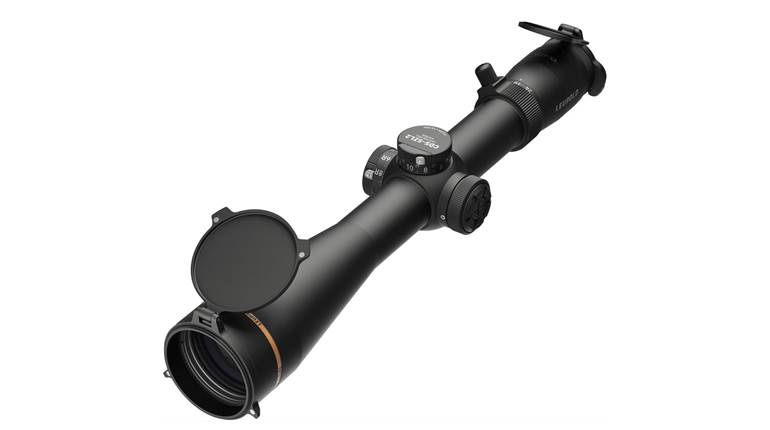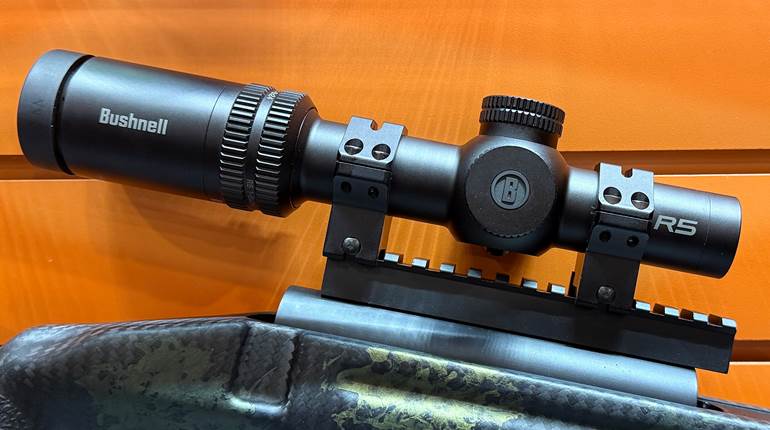Leupold has been working with military and law-enforcement customers for decades, going back to the earliest years at the company before dedicated military optics were even considered. Starting in the 1980s, though, the company focused on producing optics designed specifically to handle the harsh conditions of a combat environment. "American Rifleman Television" visited the company's Beaverton, Oregon, headquarters to learn more about what goes into making the military Leupold.
"Going back to the early '80s, mid-'80s, was about the first time that we actively engaged with an actual program to build a sniper scope, and that was for the U.S. Army M24 system," said John Snodgrass, product line manager, Leupold & Stevens, Inc. "We made it official in 1988 when the M24 launched. So Leupold tactical scopes have been in the system throughout the world since that time."

Before then, Leupold had an active relationship with the military, which saw enough ruggedness built into the company's commercial hunting riflescopes to warrant consideration for combat use. That ruggedness stemmed from the company's origins, when company founder Marcus Leupold sought to build a better riflescope than the one that failed him on a now-famous Oregon hunt. The company's focus on rugged, reliable designs continues to the present day.
"When I was on active duty, we used a lot of the Leupold products, especially the 3.5-10X LRTs in the Mark 4 series on our M110s. And we used those, you know, quite a bit over all my deployments through Iraq and Afghanistan," said Brenton Baer, sales specialist, Leupold & Stevens, Inc. "I think, in a military setting, what really sets Leupolds apart is the fact that they're made right here. We're able to really keep our hands on every facet of the manufacturing process. We're able to build in all of our own quality. We're not outsourcing any of that to anywhere else."

One optic commonly seen in military use is Leupold's Mark 4 riflescope line, which is employed atop the military's Barrett M107 semi-automatic .50-cal. rifles. Despite the intense energy produced by fired .50 BMG rounds, these riflescopes have lasted through years of rigorous use without issue.
"Internally here, we have our own engineering groups. We have a model shop. We have the capability to essentially go from a napkin drawing or an idea to a 3D-printed part or optical system, include lenses and build-up, even on a 3D-printed level, some kind of a test optic to see how the prescription will work," said Tim Lesser, vice president of product development & marketing, Leupold & Stevens, Inc. "From there, we can actually take and make it out of metal. As you would see on a fully production-ready riflescope, all in-house, in this building, in a matter of a few days. And what that really allows us to do is take and explore ideas that may not immediately look like a home run, or you don't know, you're not guaranteed that this is going to work. It allows us to not take the safe road, if you will, and really push the limits and go try things."

This development process and the resulting products that emerged is just one of the aspects that attracted the military to Leupold's designs.
"A lot of people don't know that we invented the tactical scope," said Nick Kytlica, shooting sports marketing manager, Leupold & Stevens, Inc. "It didn't really exist before the mid-'80s, right? In previous military applications, they would just use hunting scopes, right? You know, look at the old M40 scope, the Redfield. It was just a 3-9X 40 mm with a duplex. 'Cause that's what you would put on your hunting [rifle] back then. So the Army came to us in the mid-'80s, and they said, "Hey, we want to design a purpose-built scope for sniper applications that needs to withstand all the rigors of a deployment."
This initial program resulted in fixed 10X and 16X riflescopes called the Ultras that were deemed durable enough for combat issue. The design work that went into the Ultra riflescopes ultimately led to the development of Leupold's Mark 4 line of riflescopes.

"I'd be hard-pressed to think of a region, you know, I'm sure you could stump me on a country or two, but a region that is not running Leupold," said Tommy Veley, international sales manager, Leupold & Stevens, Inc. "There's a lot of Leupolds in Europe, and there's a lot of Leupolds that we're selling to allied countries. Primarily, our most popular optics that we're selling there right now are our Mark 5 line, we've got our Mark 4 line for spotting scopes, really popular, and obviously our Delta Point Pros are incredibly popular as well. So one of those three products, I'd be willing to bet you is in just about every country around the world."
Currently, Leupold's Mark 5HD line of riflescopes has entered active service, with the Mark 5HD 5-25X 56 mm riflescope having been selected for the U.S. Army's Precision Sniper Program and the 3.6-18X 44 mm riflescope being used on the Army's M110 Semi-Automatic Sniper System.

"Adoption by the military with our products has really helped the commercial products as well," Lesser said. "We will build the best product that we can. We'll get it out there. If it wins a military contract, it's now going to be used in some very, very important ways, difficult and harsh environments, and we're going to learn things from that. We look at things and say, 'What's working the way that we thought it would?' Generally, we find that they perform exactly as we expected, but then we learn something new. And that new piece will go into the next design."
To watch complete segments of past episodes of American Rifleman TV, go to americanrifleman.org/artv. For all-new episodes of ARTV, tune in Wednesday nights to Outdoor Channel 8:30 p.m. and 11:30 p.m. EST.

























